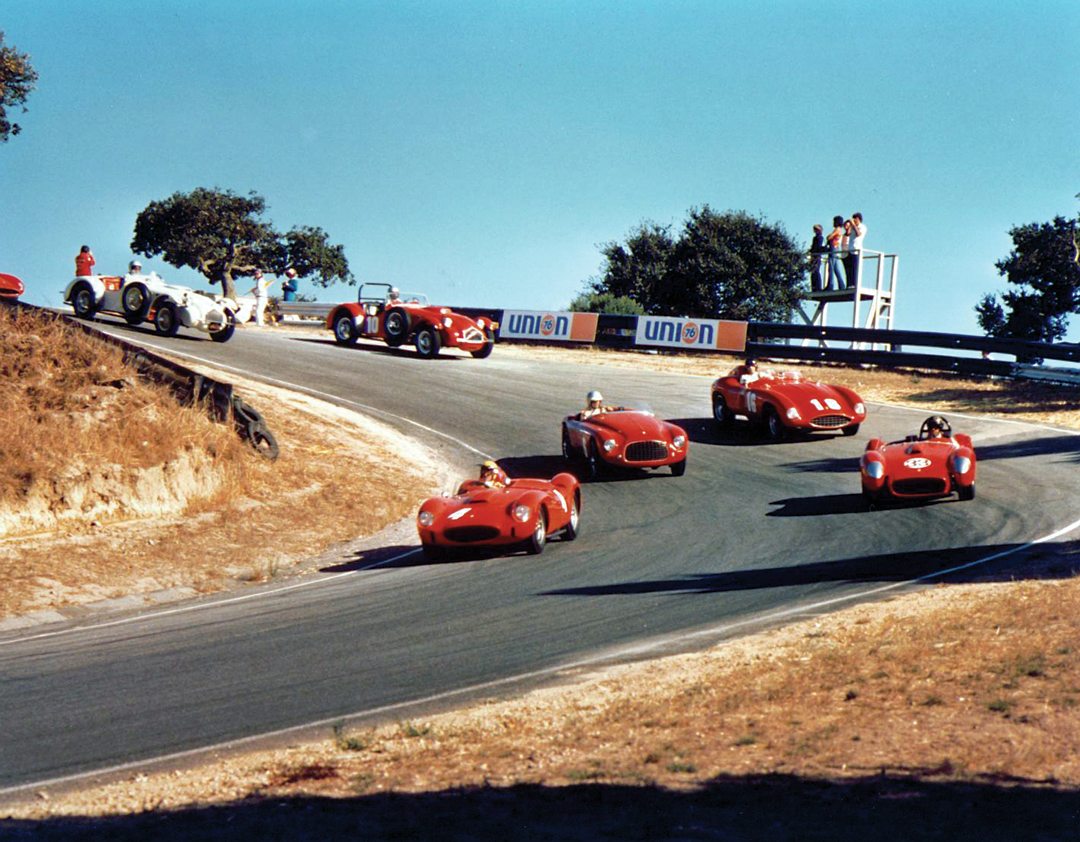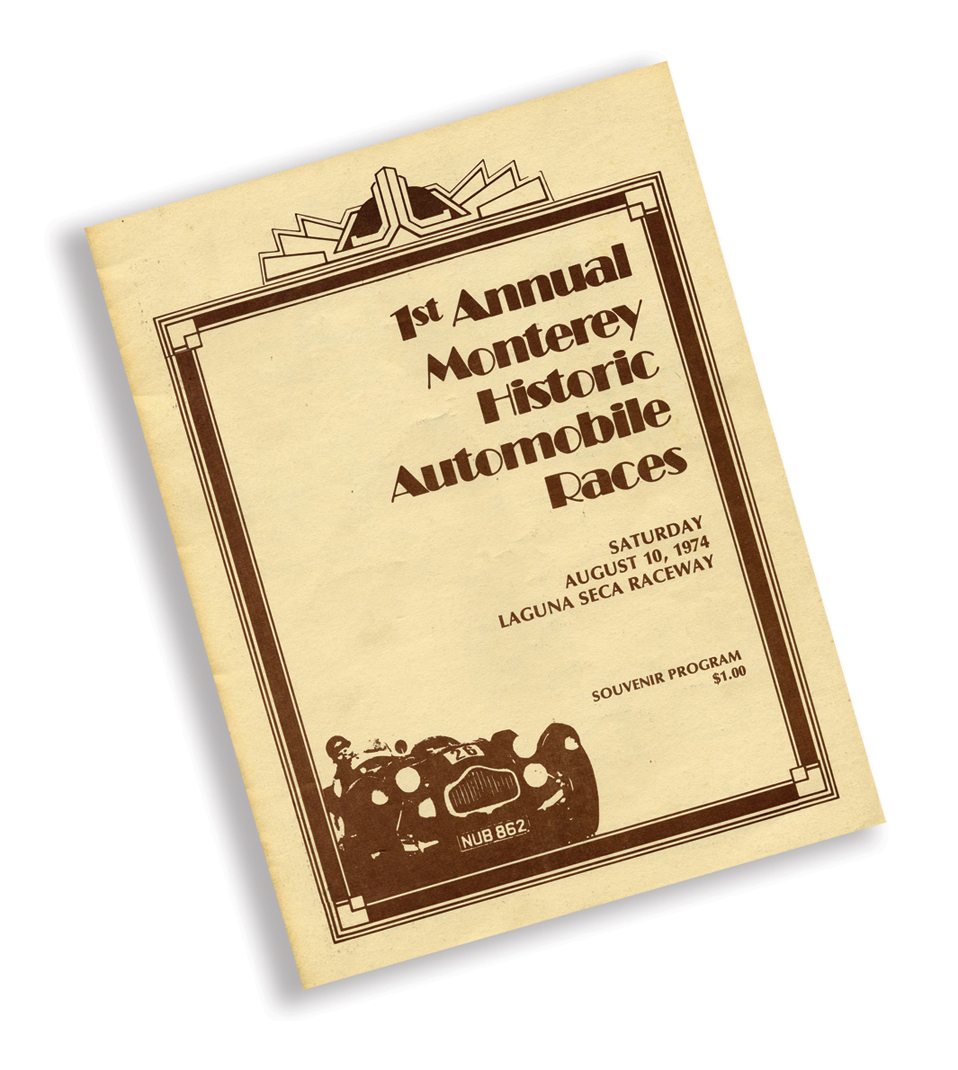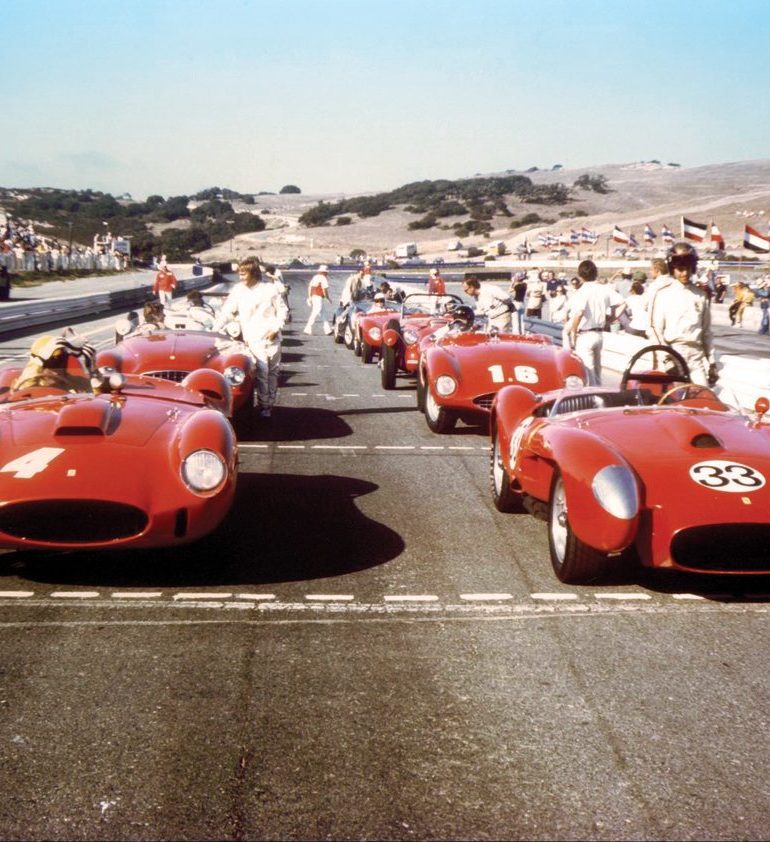On this, the thirty-fifth anniversary of the Monterey Historics, I thought it would be interesting to look back and see how it all started. The date was August 10, 1974.
August 10 that year fell on a Saturday. There was no Sunday racing even though California has no “blue laws” like those that restrict Lime Rock. The reason was that it was expected most everyone would want to go to the concours at Pebble Beach on Sunday. There was no practice on the Friday, so the first Historics was a one-day event.
The meeting was billed as the “1st Annual Monterey Historic Automobile Races.” The “Race Chairman and Race Coordinator” was, of course, one Steven J. Earle. According to the official program—which cost all of one dollar—“The Monterey Historic is being held in cooperation with Del Monte Properties, sponsors of the 24th Annual Pebble Beach Concours d’Elegance; the Sports Car Racing Association of the Monterey Peninsula (SCRAMP); and the Monterey Peninsula Chamber of Commerce.” The San Francisco Region of the Sports Car Club of America conducted the event. Steve’s corporation—General Racing, Inc.—created it.
As you can see, not a whole lot has changed, except many more days—plus the entire preceding weekend—have been added. Even so, Steve turns down many entries that can’t be accepted due to paddock space and track time. In 1974, 67 entries were listed in the program. Not many drivers are familiar names. Steve Earle himself entered his 412 Ferrari, which was the same car Phil Hill drove for owner John Von Neumann at the 1958 Times Grand Prix. Steve himself had learned to race at Paramount Ranch in 1957.
One thing I learned early on, due to my own involvement staging vintage races, is that success depends on having a strong hand at the helm, like a general as it were. A race meeting is similar in some ways to a battle. Insofar as the Monterey Historics are concerned, Steve Earle is the general.

Photo: Steve Earle Collection
Recently, I had an opportunity to talk with Steve about that first event. At the time there was only limited vintage racing in the western United States. In England, however, there had long been historic racing. I asked Steve how he got the idea. He replied that, at that time, there was virtually nothing anyone could do with an old racecar. No longer competitive, they didn’t have much value. His concept “was to have a spectator event created to share old racecars with others who would appreciate them.
“I thought it would be an interesting idea,” he said, “to have an event that would encourage people to preserve old cars and relive old races.” In 1974, there were only three road racing circuits in California: Riverside, Willow Springs, and Laguna Seca. He picked Laguna, he said, because he never had a date that wanted to go to Riverside or the Antelope Valley. On the other hand, when asked if she wanted to go to Monterey or Carmel, the answer was always, “Yes!”
Monterey had everything he was looking for. It had a historic background and the availability of a racetrack. Not only that, the concours was a draw and the area is a holiday destination with lots of lodging and great restaurants.
Steve’s first step was to go to Carroll Rissel, then concours chair, and tell him about the idea of creating a historic race weekend. Next, he talked to Laguna Seca manager, Bob Hugel. At that time, real racing didn’t take all the weekends, so a lot of dates were available. Luckily, the concours weekend was open.
His next problem was getting entries. It was largely a matter of word of mouth. Steve talked to all his friends, the friends talked to theirs, and so on. “Insofar as the actual race operation was concerned, my most important consideration was safety.” The San Francisco Region SCCA, had been operating pro events as well as their own amateur ones, so Steve went to Regional Executive Ross Hansel and hired the workers plus Dr. Peter Talbot as the chief steward. Peter was great, Steve said. “He played the role perfectly. He was big, tall, and stern. When he said, ‘You will not do this,’ everyone listened.”
Steve’s idea was that the event would not be for real race drivers. It was to be primarily about the cars, not stars. His mistake that first year was to have the usual overall and class trophies. When he put them out at the awards party for everyone to see, all of a sudden, the drivers began to covet them. This created a bad attitude, so he never did it again.

Looking over the entries, I noticed that my friend Anatoly “Toly” Arutunoff of Tulsa, Oklahoma, had entered his 1949 Cooper. So I called him to ask about it. He told me that when he heard there was going to be a vintage race at Monterey, he decided to enter because he didn’t have a girlfriend and there were no available girls in Tulsa! Towing the Cooper through the mountains of New Mexico, he came upon a gorgeous gal standing next to a new Camaro, so naturally he stopped to help. It turned out the car had overheated because all the water had boiled out due to an improperly installed radiator cap. So Toly drained out the water from his Cooper and got her back on the road. But she drove off before he had a chance to ask for her name and phone number. Drat!
What he remembers about the event was that there was “a nice little group of people and all these funky cars.” While he was out practicing, the engine quit due to a faulty magneto. Toly had no spare, so he spent the rest of the day spectating. Arutunoff, a dedicated vintage racer, entered a number of times since then and will be there this August. In 1974, Toly was the only entry not from California. This year, they will come from all over the world!
Vintage racing, when added to the traditional concours, did in fact, create a memorable weekend. Knowing that financing was necessary to promote a race meeting, I asked Steve where he got it. “I came up with it out of my own pocket,” he said. Luckily, that first event more or less broke even. The entry fee then was thirty bucks plus $10 for the driver. Tickets were $10 at the gate; $5 for military and students with IDs. Officials had to pay $10, too!
I have always appreciated the fact that Steve has kept the emphasis on the cars themselves. As much as is possible, he requires them to be authentic for their period. He even makes them run on the old skinny, hard Dunlops. And there are still no rewards or trophies for winning.
Thanks, Steve, for the memories.




